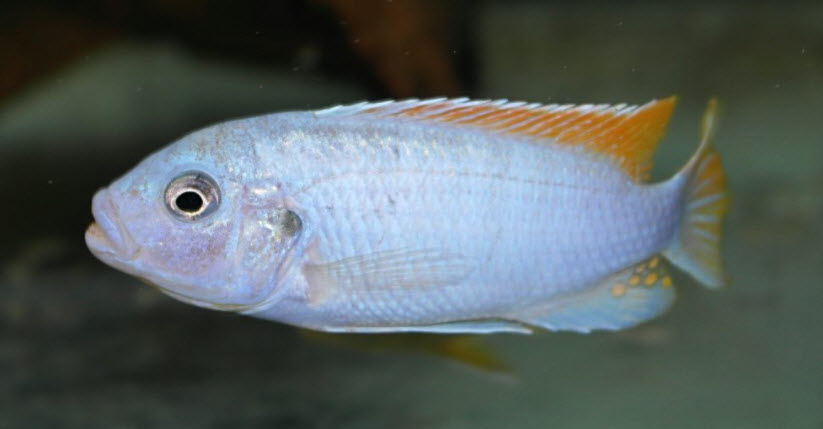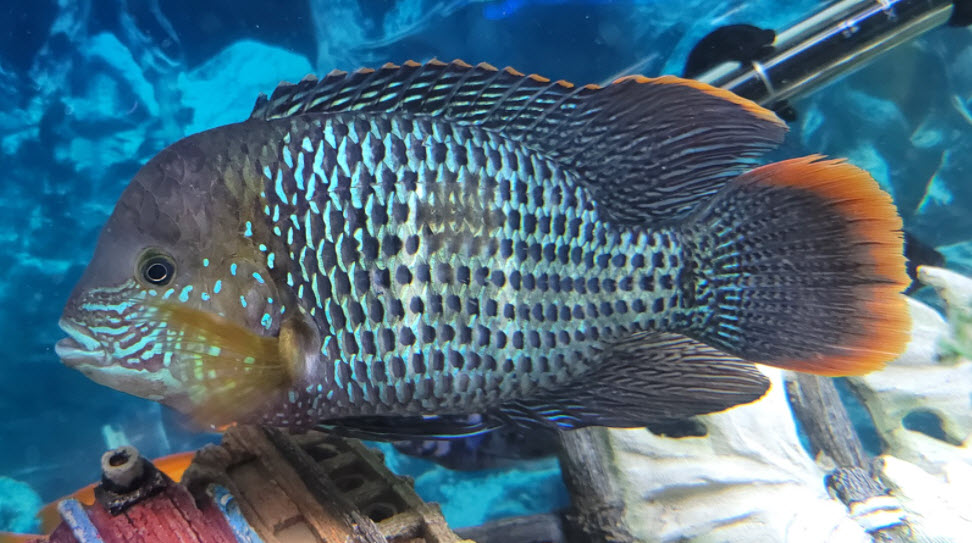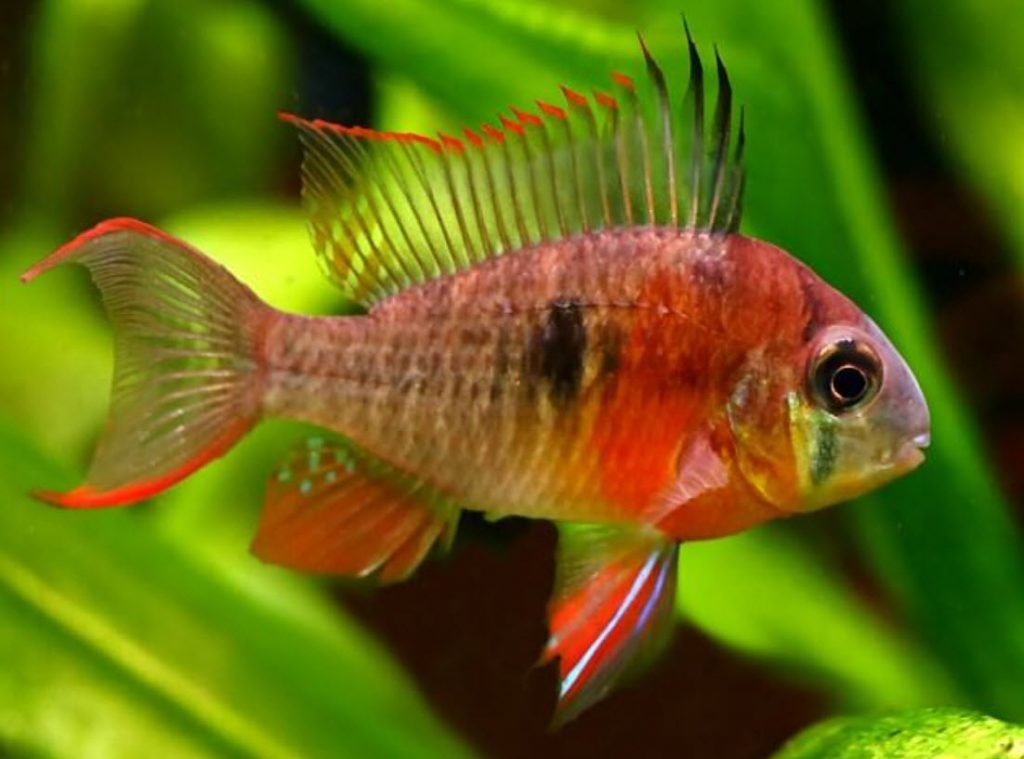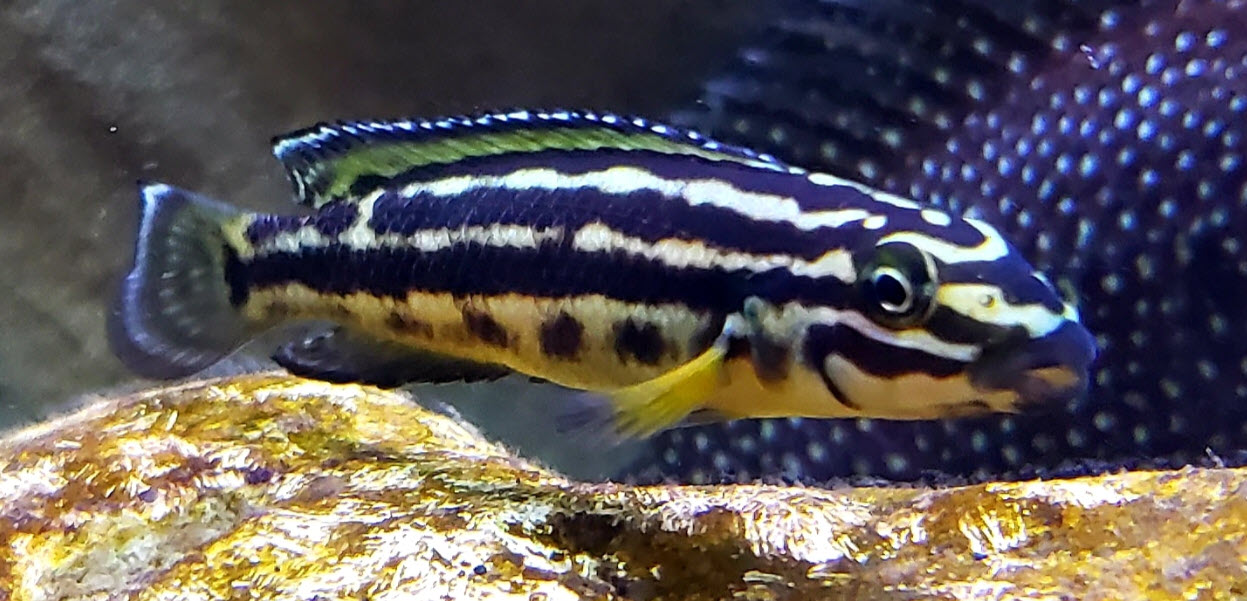- Your cart is empty
- Continue Shopping
Beneficial Bacteria 101 for Fish

Beneficial Bacteria 101 for Fish
Beneficial bacteria are essential for a healthy aquarium. They break down fish waste, dead plants, and other organic matter, keeping the water clear and preventing toxic ammonia and nitrite from building up. Beneficial bacteria are also important for aquariums or ponds, where they help with filtration and water quality.
Beneficial bacteria are part of the nitrogen cycle, which converts waste and reduces toxins. They live in the filter and gravel.
- Nitrifying bacteria
- Nitrifying archaea
- Purple non-sulfur bacteria (PNSB)
You should avoid overcrowding beneficial bacteria, as they will compete for resources and the weaker organisms will starve and die.
Using “Good” Bacteria in Your Aquarium
Upon hearing any mention of bacteria, some people immediately think of germs. Indeed, certain pathogenic microbes can be quite dangerous. On the other hand, there are many types of helpful bacteria that can be rather beneficial. In fact, without them, life on Earth as we know it would probably not be possible—and neither would recirculating aquarium systems!
Given the relatively small volume of water in even the biggest fish tanks, biological waste products can build up quickly. Some of these wastes are sufficiently toxic to kill fish aquarium livestock, and thus must be controlled.
This can be accomplished by way of regular water exchange. Even so, it is time-consuming and perhaps a bit expensive to constantly perform huge aquarium water changes.
This is where certain types of bacteria help to make aquarium maintenance a lot more manageable. Through their own metabolic activities, these good bacteria either convert toxins into less harmful substances or remove them by taking them into their own bodies.
Here are some important tasks that helpful bacteria perform.
Aquarium Bacteria Facilitate Nitrogen Cycling
Aquarium animals such as fishes release ammonia directly from their gills into aquarium water. In this manner, ammonia levels quickly spike, with deadly results. These losses—usually total crashes—are especially common in immature systems (i.e., “new tank syndrome”). Thus, nitrogen cycling is perhaps the most important role helpful bacteria play in the aquarium ecosystem.
This is actually a two-part process; one species (e.g., Nitrosomonas) oxidizes really poisonous ammonia to fairly poisonous nitrite, while a second species (e.g., Nitrobacter) oxidizes the nitrite in the aquarium into mildly poisonous nitrate.
Freshwater and saltwater aquarists alike use the term “cycled” to indicate when resident populations of nitrifying bacteria are large enough to keep ammonia concentrations below detectable levels.
The quickest and surest way to initiate cycling is to inoculate the tank with live nitrifying bacteria for aquariums, such as Dr. Tim’s Aquatics Live Nitrifying Bacteria or Instant Ocean BIO-Spira Live Nitrifying Bacteria. These products can also be used after water changes or when adding a new fish.
Now, just because nitrate in the aquarium isn’t very toxic doesn’t mean that we shouldn’t be concerned about it. To the contrary, it not only can become harmful to animals at very high concentrations (>50 ppm), but it also serves as a fertilizer for undesirable algae. While nitrate levels are most often kept in check through regular water exchange, here again, there are good fish aquarium bacteria that can save you substantial work.
These are known as denitrifying bacteria. As part of the process of their anaerobic respiration, denitrifiers convert nitrate into nitrogen gas. They typically require an organic carbon source for energy as well as oxygen concentrations of less than 10 percent.
Helpful Bacteria Keep the Aquarium Clean
Various particulate and dissolved organic substances can foul aquaria by adding unsightly yellowish tints to the water and forming piles of debris, or detritus, on the tank floor.
Here too, water changes can reduce the amount of wastes. Activated carbon is frequently used to remove heavy dissolved organic loads. However, bacteria in aquariums (you guessed it!) can do much to ease this task for the aquarist.
This job is usually assigned to obligately aerobic, heterotrophic bacteria. Unlike autotrophs that can make their own food, heterotrophs must eat some sort of organic carbon. Along with organics, these microbes might also assimilate excess nitrate and/or phosphate. Some aquarists might even intentionally add organic carbon (using various liquid or granular bacterial foods) to accelerate nitrate/phosphate removal.
Purple non-sulfur bacteria for fish tanks (or PNSB) can be used for the same purpose here, though they will live in anaerobic areas such as within the sand bed. In addition to clarifying water and consuming detritus (earning the oft-used moniker “sludge eater”), PNSB can bio-assimilate nitrate. Even more, they act as powerful probiotics!
Creating A Microbial Utopia
Aside from using inoculants, the aquarium keeper can maintain high populations of good bacteria by providing them with a perfect living space. This is simple with the use high-surface area “biomedia.” These materials are long-lasting, nontoxic and extremely porous. The best come in a block form (e.g., EcoBio-Block) that can be easily tucked away in the sump or within a filter component. You can also try Seachem Matrix in any kind of filter.
Not only do these media provide a huge amount of habitable space, but they also allow for a synergistic relationship between different types of microbes. For example, nitrifying bacteria can colonize the outside, aerobic parts; the nitrate they produce drifts into the deeper, anaerobic pores of the medium where denitrifiers can easily grab and metabolize it.
Necessity of Good Bacteria
Certainly, not all bacteria are bad! Even though we cannot see what they are up to, some bacteria are downright necessary for a healthy aquarium environment. You can always rest assured that the good guys are present by putting them there using a quality live inoculant. It’s even better to give them a great place to live. This tiny investment of effort will promote a big, healthy and diverse community of beneficial microbes.
Go big with this; you cannot overdose good bacteria, nor do these good types ever turn harmful. The more of them you can culture, the less time you’ll have to spend on cleaning and water changes!
Using Beneficial Bacteria for Clear Water
Beneficial bacteria are instrumental in keeping a water garden clean and balanced. Beneficial bacteria live their life noshing on the excess nutrients in your aquarium or pond, converting it into a harmless gas. They then divide via a cellular division, called binary fission, to keep the population going. Since they are so handy, you might be tempted to add a few extra to really make your aquarium or pond shine. While too much beneficial bacteria is not necessarily bad, it will likely make your pocketbook a little lighter.
Food Fight
Invite too many to your dinner party and there might not be enough food to go around. The same thing goes for your microorganisms. Overcrowding beneficial bacteria causes them to compete for resources rather than growing big so they can reproduce. Weaker organisms follow Charles Darwin’s theory and ultimately starve and die. This causes the overall bacteria population to drop, meaning you need to add more bacteria to replace what gets lost. After a while, costs for repopulating could really add up.
When Good Bacteria Goes Bad
Plants and fish will generally be safe if too much beneficial bacteria is added. Trouble occurs when there is a lot of organic buildups, numerous beneficial bacteria, and inadequate aeration. Like fish and other aquatic organisms, good bacteria need oxygen. In aquarium or ponds with high nutrient loads, bacteria are able to rapidly reproduce since food is not a limiting resource. This population explosion depletes the dissolved oxygen levels in the aquarium or pond. Introducing an aeration kit, will infuse oxygen into the aquarium or pond and circulate the water column. Adding aeration will not only make a great addition for the summer when your bacteria are active, but it will also help keep a hole open in the ice during winter.
Even Stevens
The best bet for your aquarium or pond and pocketbook is to stick to using the doses listed on the product labels for regular maintenance. Beneficial bacteria is a useful tool for creating a balanced ecosystem, but it is only one piece of the aquarium or pond. If you continually struggle with muck, poor water quality, or algae blooms, try to think about what the root of the problem might be; oftentimes, it is linked to one of these scenarios.
Beneficial Bacteria 101 Science
There are several general types of beneficial bacteria involved in oxidizing ammonia to relatively safe nitrate in the freshwater aquarium. Scientists call these organisms “nitrifying” bacteria and archaea. We will use the term “beneficial bacteria” for both the nitrifying bacteria and the nitrifying archaea. Below in this article, we try to explain the complex science of “beneficial bacteria”.
This information is not necessary for setting up new aquariums or running existing aquariums. But some like to delve into the science. Read on if you are so inclined. Just be prepared for a very boring, long-winded dissertation only true nerds such as the author will be interested in.
Beneficial Bacteria in Depth
From a pure science perspective there are a whole series of “beneficial bacteria”, with more being discovered every year.
“Ammonia-oxidizing archaea and complete ammonia-oxidizing Nitrospira in water treatment systems”, Al-Ajeel 2022
“The sequential steps of this respiratory process are carried out by distinct microbial guilds, including ammonia-oxidizing bacteria (AOB) and archaea (AOA), nitrite-oxidizing bacteria (NOB), and newly discovered members of the genus Nitrospira that conduct complete ammonia oxidation (comammox). Even though all of these nitrifiers have been identified within water treatment systems, their relative contributions to nitrogen cycling are poorly understood. Although AOA contribute to nitrification in many wastewater treatment plants, they are generally outnumbered by AOB. In contrast, AOA and comammox Nitrospira typically dominate relatively low ammonia environments such as drinking water treatment, tertiary wastewater treatment systems, and aquaculture/aquarium filtration.”
“Beneficial bacteria” are responsible for what is known as the nitrogen cycle in an aquarium. These bacteria ONLY grow and reproduce on surfaces, they do NOT grow or reproduce floating free in the aquarium water (that is a very old aquarium myth). Some of these “beneficial bacteria” do this oxidation of ammonia in two steps. The first step is to oxidize ammonia (NH3) to nitrite (NO2) (AOB and AOA). Nitrite (NO2) is then oxidized to nitrate (NO3)(NOB), which is much less toxic than either ammonia or nitrite. Some bacteria do this oxidation in a single step (comammox Nitrospira).
Because these chemical processes are very low energy reactions these bacteria need a lot of molecules of all the chemicals to metabolize. They require something called “turbulent water flow” to get the chemicals to the bacterial surfaces in quantity. All the “beneficial bacteria” involved in this ammonia oxidation need amounts of oxygen (greater than 80% water saturation), carbon dioxide, and ammonia to thrive. They also all need a surface to hold on to, none can reproduce in a free-swimming mode. They are all very slow to multiply, with NO exceptions.

These “beneficial bacteria” are what are termed “obligative autotrophs” or “obligative chemotrophs”. What this means is that these bacteria cannot feed on “normal” food, namely proteins and carbohydrates. These bacteria MUST (note the term obligative!) feed on chemicals (this is the term “chemotrophs”), namely three things: ammonia gas (NH3), carbonate (CO3), and oxygen (O2). They use these chemicals to make up the proteins and ingredients in their bodies.
Because these bacteria feed on these three chemicals anything which increases the amount of all three chemicals will increase the rate at which the beneficial bacteria multiply. So the required cycle time of an aquarium can theoretically be decreased by:
- Adding more ammonia (NH3)
- Adding more carbonates (CO3)
- Adding more oxygen (O2)

But the effect of adding more of any of these is much much less than popular “science” says. Most research on beneficial bacteria is based on sewage treatment. Sewage treatment is just worlds different than oxidized ammonia in an aquarium. For instance, many tote the benefits of bio wheels on filters. Bio wheels are based on the use of circular aeration disks in sewage treatment. The claim is that because oxygen is important in ammonia oxidation one needs a large amount of oxygen a wheel provides.
But even during cycling, where one might be adding 2 ppm per day of ammonia, one only needs 2×3.6 = 7 ppm oxygen to oxidize the ammonia in one day. 7/24 = 0.3 ppm per hour. Any decent aeration will add 1 to 10 ppm oxygen per hour to an aquarium. So in aquarium oxygen is NOT a limiting factor and adding more with something like a biowheel doesn’t help very much. In a sewage treatment plant, the ammonia can be 40 ppm with a residence time in hours, a much different situation. That being said, we do advise one have VERY heavy aeration during cycling.

Because beneficial bacteria need a flow rate above what is found inside most aquariums, studies (“Temporal and Spatial Stability of Ammonia-Oxidizing Archaea and Bacteria in Aquarium Biofilters”, Bagchi et. al., 2014) have shown that 80% to 84% of the beneficial bacteria in an aquarium reside in the filter media. The substrate, aquarium walls, and ornaments have only a 16% to 20% contribution to ammonia oxidation and clear water. And in a very well filtered aquarium with crystal clear water this will be even more lopsided, more like 95% – 5%.
But remember Mother Nature is quite flexible. It is possible to force the substrate and the ornaments in an aquarium to do the biofiltration. If one does something like only using sponge filters in an aquarium and rinsing those sponge filters out thoroughly under running water once a week, one will force the substrate and ornaments to become the biofilter. This is quite acceptable way to do it. But do not try this with a heavy stocking.

